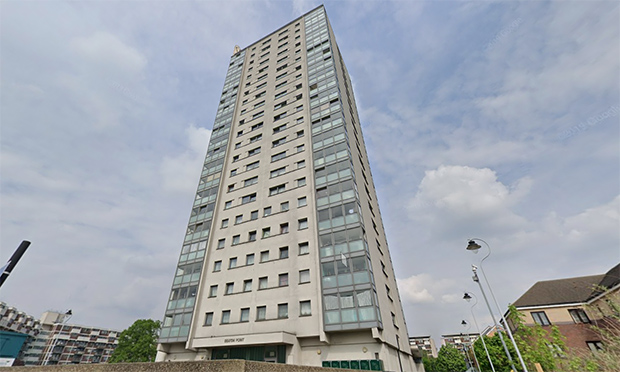Town Hall to remove combustible insulation from Nightingale Estate tower block

Hackney Council is this year preparing to remove combustible external wall insulation (EWI) from the last of its residential buildings found not to meet post-Grenfell building standards.
Following a government review at the end of 2018, the use of such material in the external walls and balconies of buildings over 18 metres tall was banned, with the council since stripping out EWI from Hugh Gaitskell House, as well as at Nye Bevan Estate and from three blocks at Lincoln Court.
The last building with insulation still to be removed is Seaton Point on Nightingale Estate, with the Town Hall assuring residents that “work is just about to commence” and stressing that the insulation “does not pose a fire risk”.
A council spokesperson said: “We’re investing in Hackney’s homes and estates to make them better, greener and safer, and the new insulation being installed at Seaton Point is part of a package of improvements including a new roof, replacement internal fire doors, and new kitchens and bathrooms.
“We’re clear that the insulation at Seaton Point does not pose a fire risk and that the building is safe for residents to live in.
“However, as it was installed more than 20 years ago, we’re upgrading the building with better insulation that meets the latest fire safety standards introduced last year. This is consistent with the approach we’ve taken for our other buildings with this type of wall insulation.”
Seaton Point residents were told that the insulation in the building did not meet “the most up-to-date building standards” in August of last year, with work set to begin at the building in April.
The works on the Nightingale Estate are part of a £5m programme to replace EWI in the council’s buildings, against a background of £75m of investment scheduled for 2020/21.
